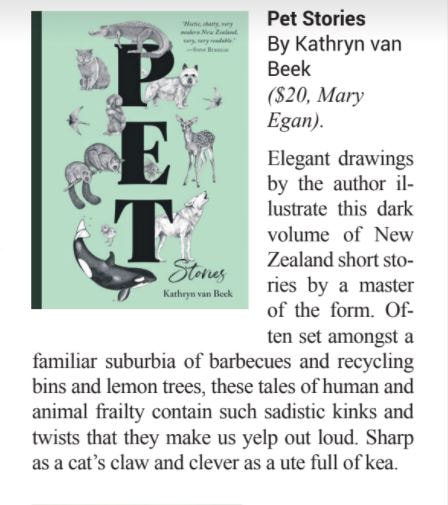I'd like to invite you to come on a crowd-funding journey with me.
On 24 May I'm going to launch a crowd-funding campaign to raise funds for my illustrated children's book Bruce Finds A Home. Over the next five weeks leading up to the campaign, during the four weeks of the campaign itself, and in the weeks afterwards (when I get into the nitty gritty of printing the books and fulfilling rewards) I'll keep you posted with insights and updates. You're welcome to follow along and hopefully pick up some useful tips about crowd-funding and book publishing along the way. In today's post I'll explain the rationale behind the decisions I’ve made so far, and fill you in on my secret weapons! Why not use a traditional publisher? I’m a writer of short stories that have found a small audience in journals and magazines. When I ended up with a famous internet cat, I suddenly had a much bigger audience – 28, 886 to be precise! Creating a children’s book about my cat Bruce seemed to be a good way to marry my love of writing and illustrating with an in-built audience of people who care about Bruce and feel invested in his story. I wrote the text, completed the illustrations and then looked into traditional publishers. After spending all that time on the story and the pictures, I really wanted to avoid the hassle of the actual publishing! But when I realised it might take a year or more to work my way through my list of traditional publishers, I decided to take matters into my own hands. This isn’t necessarily something I would have done if I didn’t already have an established audience – I feel more confident taking this approach because of Bruce’s existing fan-base. I looked into self-publishing, but I was convinced that if I published the book myself I’d end up making a mistake somewhere along the line – and I want Bruce Finds A Home to be a quality product. So I was thrilled when I found out about Mary Egan Publishing, which enters into joint venture partnerships with writers. I contacted Mary Egan Publishing with my pitch and heard back from them immediately. It turns out that they were already fans of Bruce on Facebook and could really see the potential for this story. As an added bonus, they are well-versed in crowd-funding and have had considerable success with titles such as Tu Meke Tui and Feel A Little. Thanks to this partnership I’m getting all the benefits of professional editors, award-winning designers and years of industry experience – but this kind of quality comes at a price. Bruce himself isn’t able to contribute financially to the book (he still owes us $3K for his vet bills!) so I decided to use crowd-funding to cover the book’s production costs. Why Kickstarter? There are some fantastic crowd-funding platforms in New Zealand, including PledgeMe and Boosted. Internationally, Kickstarter and Indiegogo are two of the biggest. I am super keen to try Boosted sometime in the future, but the Boosted platform doesn’t offer rewards – and a key aspect of my Kickstarter is giving people the opportunity to pre-order the book. PledgeMe is also a highly-regarded platform, but because Bruce has an international audience I decided to go with a site that will hopefully already be familiar to more of Bruce’s fans. The research I did indicated that Indiegogo is more geared at tech projects. So that led me to Kickstarter – which also has the advantage of having a large inbuilt audience. What’s the disadvantage of Kickstarter? When it comes to getting your money, it’s all or nothing. So if I don’t reach my target, none of my backers will get charged. That’s great security for them – but nerve-wracking for me! My secret weapons… I have three secret weapons up my sleeve: interns, sponsors and resources. Interns. A couple of weeks ago I realised that it would be way more fun to do this Kickstarter with other people. Not only to help share the load of the work, but also to share in the excitement, the trials and tribulations, and the successes. I put an ad on The Big Idea asking for interns and have since connected with three amazing people who each have unique skills that will be incredibly valuable for this project. In fact, ‘intern’ doesn’t do justice to their skills so we are coming up with new job titles as we speak! I’ll do my best to make sure they each learn kickass marketing, crowd-funding and publishing skills… and that they finish the project with excellent references under their belts. Sponsors. The research I’ve done tells me that crowd-funding campaigns are exponentially more likely to succeed if they reach 20% of their funding target within the first week. (This is because everyone loves to ‘back a winner’ – so it pays to put your best foot forward.) I’ve put together a sponsorship proposal and I’ve been reaching out to businesses that I think might be interested in supporting the project in exchange for reaching Bruce’s audience. An all-star cast of sponsors have come on board already – hopefully I’ll be able to spill the beans as to who they are in an upcoming post! These amazing businesses are essentially the ‘seed funders’ of the project, and if this we reach target it will be in no small part due to their support. Thank you sponsors! Resources. The internet is a wonderland of crowd-funding and Kickstarter resources. Many of these can be found on crowd-funding websites themselves: Reading about what other people have done has also given me some useful insights into planning my own campaign. Here are some blog posts and articles that I’ve found particularly useful:
See you next week in my Four Week Kickstarter Countdown post! Join my mailing list to receive interesting but infrequent news. |
AuthorKathryn van Beek (she/her) is a Pākehā New Zealander of Dutch and English descent. A Robert Burns Fellow and a Winston Churchill McNeish Writers’ Fellow, Kathryn has a doctorate on the topic of using writing as a tool for positive change. Archives
April 2024
Categories
All
|



 RSS Feed
RSS Feed